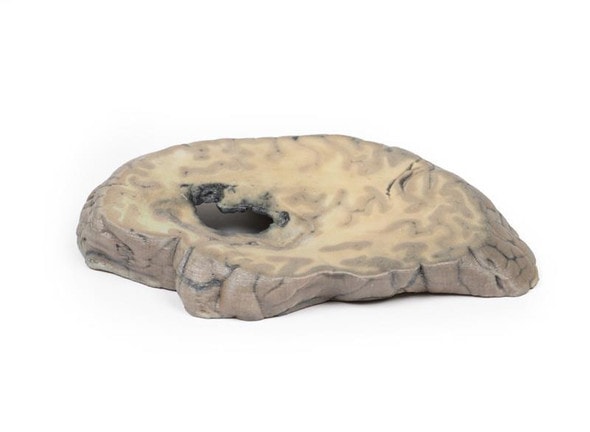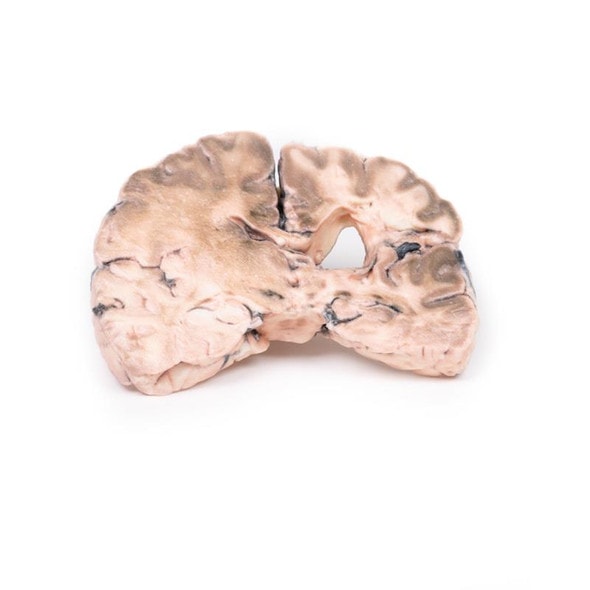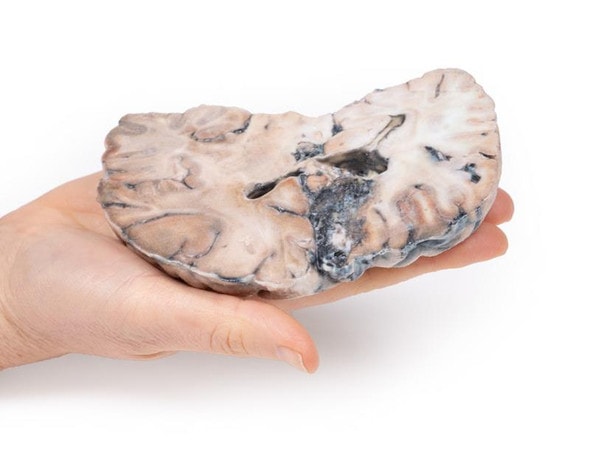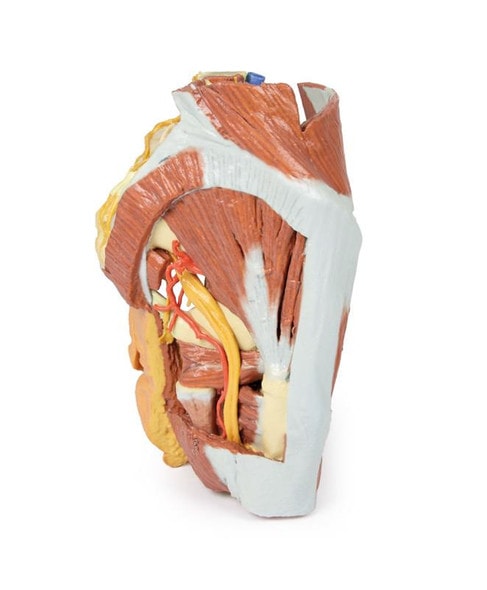- Home
- Anatomy Models
- Head & Neck Anatomy Models
- 3D Printed Brain Stem with Deep Cerebral and Diencephalic Structures
Description
This 3D model preserves the several deep cerebral and diencephalic structures through to the proximal medulla oblongata and compliment the other isolated brainstem in our series.
Superiorly, on the right side of the 3D model, the lentiform (lenticular) nucleus is in place and the corona radiata of the internal capsule is seen emerging around it. On the left, the lentiform nucleus is absent, but the caudate nucleus head and body are present medially on both sides, wrapping medial to the preserved internal capsule margins and leading to the amygdaloid bodies on each side. The thalami are present bilaterally, and the third ventricle is opened slightly in the midline inferior to the epithalamus (pineal gland).
Anteriorly, the cerebral peduncles are present, with the optic nerves extending from the preserved chiasm and tracts. The interpeduncular region is exposed with both the mammillary bodies and the sectioned infundibulum visible. Caudal to the interpeduncular region is the pons preserving the origins of the middle cerebellar peduncles as well as the origins of cranial nerves V, VII, and VIII. The portion of the medulla oblongata preserved possesses prominent pyramids and olives.
Posteriorly, the superior and inferior colliculi sit just superior to the sectioned superior cerebellar peduncles, and the fourth ventricle is opened to expose the rhomboid fossa and features of the floor: the medial eminence, facial colliculus, hypoglossal triangle, the vestibular triangle and the vagal triangle.
Advantages of 3D Printed Anatomical Models
- 3D printed anatomical models are the most anatomically accurate examples of human anatomy because they are based on real human specimens.
- Avoid the ethical complications and complex handling, storage, and documentation requirements with 3D printed models when compared to human cadaveric specimens.
- 3D printed anatomy models are far less expensive than real human cadaveric specimens.
- Reproducibility and consistency allow for standardization of education and faster availability of models when you need them.
- Customization options are available for specific applications or educational needs. Enlargement, highlighting of specific anatomical structures, cutaway views, and more are just some of the customizations available.
Disadvantages of Human Cadavers
- Access to cadavers can be problematic and ethical complications are hard to avoid. Many countries cannot access cadavers for cultural and religious reasons.
- Human cadavers are costly to procure and require expensive storage facilities and dedicated staff to maintain them. Maintenance of the facility alone is costly.
- The cost to develop a cadaver lab or plastination technique is extremely high. Those funds could purchase hundreds of easy to handle, realistic 3D printed anatomical replicas.
- Wet specimens cannot be used in uncertified labs. Certification is expensive and time-consuming.
- Exposure to preservation fluids and chemicals is known to cause long-term health problems for lab workers and students. 3D printed anatomical replicas are safe to handle without any special equipment.
- Lack of reuse and reproducibility. If a dissection mistake is made, a new specimen has to be used and students have to start all over again.
Disadvantages of Plastinated Specimens
- Like real human cadaveric specimens, plastinated models are extremely expensive.
- Plastinated specimens still require real human samples and pose the same ethical issues as real human cadavers.
- The plastination process is extensive and takes months or longer to complete. 3D printed human anatomical models are available in a fraction of the time.
- Plastinated models, like human cadavers, are one of a kind and can only showcase one presentation of human anatomy.
Advanced 3D Printing Techniques for Superior Results
- Vibrant color offering with 10 million colors
- UV-curable inkjet printing
- High quality 3D printing that can create products that are delicate, extremely precise, and incredibly realistic
- To improve durability of fragile, thin, and delicate arteries, veins or vessels, a clear support material is printed in key areas. This makes the models robust so they can be handled by students easily.


















